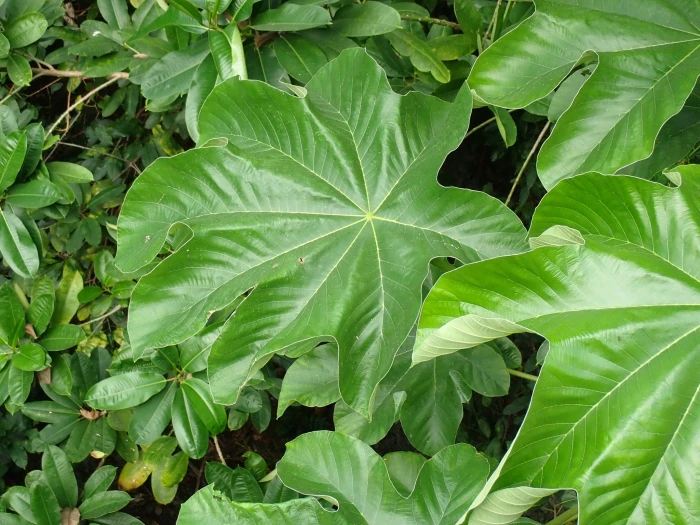Trumpet Tree
(Cecropia schreberiana)
Trumpet Tree (Cecropia schreberiana)
/
/

Don Loarie
CC BY 4.0
Image By:
Don Loarie
Recorded By:
Copyright:
CC BY 4.0
Copyright Notice:
Photo by: Don Loarie | License Type: CC BY 4.0 | License URL: http://creativecommons.org/licenses/by/4.0/ | Rights Holder: Don Loarie | Publisher: iNaturalist | Date Created: 2019-12-30T22:25:09Z |

























Estimated Native Range
Climate Requirements for Thornton, Colorado
| This Plant | Your Site | Plant Suitability for Your Location | ||
|---|---|---|---|---|
| • Precipitation | 24" - 98" | 17" | Your precipitation may be insufficient for this plant. Irrigate N" / year. | Irrigate N" / year |
| • High Temp. | 77°F - 94°F | 89°F | Your summer temperatures are normal for this plant. | Excellent |
| • Low Temp. | 16°F - 74°F | 16°F | Your winter temperatures are normal for this plant | Excellent |
This plant should grow well at your location with about N inches per year (Y minutes per month) of irrigation.
Summary
Cecropia schreberiana, commonly known as the trumpet tree, is a fast-growing, deciduous tree native to tropical rainforests and disturbed areas in Central and South America. It can reach heights of up to 60 feet (18 meters) and is characterized by its large, palmate leaves that can span up to 2 feet in diameter, creating a distinctive umbrella-like canopy. The tree is also notable for its hollow stems and symbiotic relationship with certain ant species, which inhabit the stems and protect the tree from herbivorous insects. The flowers are inconspicuous, but the tree produces small, orange-red fruits that are enjoyed by birds and other wildlife.
The trumpet tree is valued for its rapid growth and large, dramatic foliage, which can add a tropical feel to landscapes. It is often used in reforestation projects and as an ornamental in large gardens or public spaces. In cultivation, it requires a warm, humid environment with full sun to part shade and well-drained soil. It is relatively low-maintenance once established but may require regular pruning to manage its size. Due to its potential invasiveness, it should not be planted where it can spread into natural areas outside its native range.CC BY-SA 4.0
The trumpet tree is valued for its rapid growth and large, dramatic foliage, which can add a tropical feel to landscapes. It is often used in reforestation projects and as an ornamental in large gardens or public spaces. In cultivation, it requires a warm, humid environment with full sun to part shade and well-drained soil. It is relatively low-maintenance once established but may require regular pruning to manage its size. Due to its potential invasiveness, it should not be planted where it can spread into natural areas outside its native range.CC BY-SA 4.0
Plant Description
- Plant Type: Tree
- Height: 15-60 feet
- Width: 10-20 feet
- Growth Rate: Rapid
- Flower Color: Green, White
- Flowering Season: Spring, Winter
- Leaf Retention: Deciduous
Growth Requirements
- Sun: Full Sun, Part Shade
- Water: Medium
- Drainage: Fast, Medium, Slow
Common Uses
Bird Garden, Low Maintenance
Natural Habitat
Tropical rainforests and disturbed areas in Central and South America
Other Names
Common Names: Yagrumo, Trumpet Tree, Llagrumo Hembra, Pumpwood, Trumpet Wood, Yagrumo Hembra, Downgolog, Wild Pawpaw
Scientific Names: Cecropia schreberiana
GBIF Accepted Name: Cecropia schreberiana